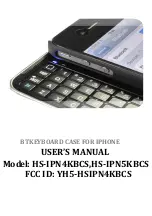
4
Value
Character
Value
Character
Value
Character
Value
Character
Dec Hex
Dec Hex
Dec Hex
Dec Hex
00
01
02
03
04
05
06
07
08
09
10
11
12
13
14
15
16
17
18
19
20
21
22
23
24
25
26
27
28
29
30
31
00
01
02
03
04
05
06
07
08
09
0A
0B
0C
0D
0E
0F
10
11
12
13
14
15
16
17
18
19
1A
1B
1C
1D
1E
1F
none
none
none
none
none
none
none
none
Backspace
Tab
none
none
none
Return
none
none
none
none
none
none
none
none
none
none
none
none
none
Esc
none
none
none
none
32
33
34
35
36
37
38
39
40
41
42
43
44
45
46
47
48
49
50
51
52
53
54
55
56
57
58
59
60
61
62
63
20
21
22
23
24
25
26
27
28
29
2A
2B
2C
2D
2E
2F
30
31
32
33
34
35
36
37
38
39
3A
3B
3C
3D
3E
3F
Space
!
“
#
$
%
&
‘
(
)
*
+
,
_
.
/
0
1
2
3
4
5
6
7
8
9
:
;
<
=
>
?
64
65
66
67
68
69
70
71
72
73
74
75
76
77
78
79
80
81
82
83
84
85
86
87
88
89
90
91
92
93
94
95
40
41
42
43
44
45
46
47
48
49
4A
4B
4C
4D
4E
4F
50
51
52
53
54
55
56
57
58
59
5A
5B
5C
5D
5E
5F
@
A
B
C
D
E
F
G
H
I
J
K
L
M
N
O
P
Q
R
S
T
U
V
W
X
Y
Z
[
\
]
^
-
96
97
98
99
100
101
102
103
104
105
106
107
108
109
110
111
112
113
114
115
116
117
118
119
120
121
122
123
124
125
126
127
60
61
62
63
64
65
66
67
68
69
6A
6B
6C
6D
6E
6F
70
71
72
73
74
75
76
77
78
79
7A
7B
7C
7D
7E
7F
`
a
b
c
d
e
f
g
h
i
j
k
l
m
n
o
p
q
r
s
t
u
v
w
x
y
z
{
|
}
~
none
ASCII Mode Translation Table
The ASCII mode table below lists the standard ASCII characters that
will produce a corresponding USB keystroke when received by the
USB-ASC232.
Extended ASCII Mode
The USB-ASC232 Extended ASCII Mode of operation allows for the
standard ASCII character set (character values 0x00 to 0x7F), in
addition to an extended ASCII character set (character values 0x80 to
0xFF). When an RS-232 byte is received in this mode, it produces a
USB keystroke on the PC which corresponds to the following table.
Parity may be set to “None”, “Odd”, or “Even”.
The number of stop bits may be set to 1 or 2 bits.
Handshaking may be set to “None”, “RTS/CTS”, or “Echo”.
When the handshaking is set to “None”, the computer sending the
information must be careful not to overflow the receiving buffer of
the USB-ASC232. The best way to do avoid the buffer overflow
in this mode is to delay 50msec after each byte is sent to the USB-
ASC232.
With handshaking set to “RTS/CTS”, the hardware controls the
flow of data between the computer sending the RS-232 data and
the USB-ASC232. This hardware handshaking prevents overflow
of the receiving buffer on the USB-ASC232 unit. When “RTS/CTS”
is used for handshaking, the DTR options for the serial port being
used on the computer sending the RTS-232 should be disabled.
The “Echo” setting means that the USB-ASC232 will send a one’s
complement response byte to each command. For instance, if a
value of 0x32 is sent to the USB-ASC232 serial port, it will reply
with a value of 0xCD in response. Use this handshaking mode as
a way to not only keep the buffer from overflowing, but is also a
confirmation of the value of the code that was received.
Note that in the “Echo” handshake mode, the response to the
0x7F request for LED status in Key Number Mode will be replied
with the status byte as outlined on page 8.
In “Echo” mode, the individual bytes of the mouse control packet
do not generate a reply. Only after the 4th and last byte of the
mouse packet has been received is an echo value of 0xFF returned
to indicate reception of the mouse packet.
15





































